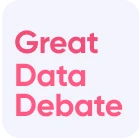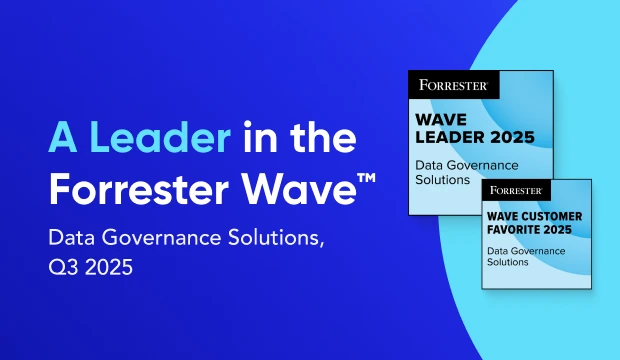Data Governance in Retail: Drive Business Growth & Efficiency in 2024
Share this article
Data governance in retail boosts profits by enabling informed decisions, personalizing customer experiences, and streamlining processes.
See How Atlan Simplifies Data Governance – Start Product Tour
This article covers the benefits of data governance in retail, including key challenges, business benefits, and the critical capabilities needed for effective implementation.
Table of contents #
- What is data governance in retail?
- Data governance in retail: Top challenges driving the need
- The business benefits of data governance in retail
- Key capabilities that can drive effective data governance in retail
- Bottom line
- Data governance in retail: Related reads
What is data governance in retail? #
Data governance in retail is a structured approach to managing data assets through policies, processes, and standards that ensure accuracy, security, accessibility, and usability.
With data pouring in from various sources—such as point-of-sale systems, e-commerce platforms, supply chains, and customer referral programs—data governance helps retailers create a unified view of their operations and customers, driving strategic business decisions.
Data governance in retail: Top challenges driving the need #
Retailers often rely on legacy systems that lack integration with modern data management tools, complicating data governance. According to Bain & Company, “architectural shortcomings and heavy technical debt with fragmented foundations” affect efforts to scale digital capabilities in the retail industry.
Let’s see how legacy systems and data architecture shortcomings affect retailers with challenges, such as:
- Data silos: Legacy systems often trap data in isolated silos across multiple channels—online, in-store, mobile, and social—each generating distinct data that remains disconnected. This fragmented architecture leads to inconsistent data formats and an incomplete view of operations, limiting data-driven insights.
- Regulatory compliance: With data protection regulations like GDPR and CCPA, retailers must navigate complex requirements around customer data. However, legacy systems often lack the security and access controls needed for compliance, raising risks of violations and penalties.
- Data quality: Ensuring data quality across diverse sources is a challenge. Inconsistent data definitions, formats, and standards can lead to errors and affect operational efficiency.
- Risk management: Legacy systems are more vulnerable to cybersecurity threats, posing significant risk management challenges. As highlighted by the State of Ransomware in Retail 2024, ransomware continues to heavily impact retailers, with 45% hit in 2024 due to “higher levels of legacy technology and infrastructure controls than most other sectors.”
The business benefits of data governance in retail #
By managing data effectively, retailers can gain actionable insights into consumer behavior, optimize inventory, personalize marketing efforts, and ensure compliance with privacy laws. Let’s explore some of the top benefits of effective data governance in retail:
- Improved decision-making: With accurate, unified data across all channels, retailers can make data-driven decisions that enhance operations, such as demand forecasting, inventory management, and product pricing. A consistent view of the data landscape enables better analytics and insights
- Regulatory compliance: Data governance frameworks help retailers comply with data privacy regulations like GDPR and CCPA. Retailers can better manage consent, control access to sensitive customer information, and maintain data transparency.
- Operational efficiency: Data governance standardizes data formats across channels, eliminating redundancies and streamlining workflows. By ensuring data consistency and accessibility, retailers can improve cross-functional collaboration, reduce manual processes, and enhance supply chain efficiency.
- Data security and risk management: Data governance frameworks include data classification and access controls, which protect sensitive customer and business data from unauthorized access. Implementing these controls mitigates the risk of data breaches, ensuring the security of valuable data assets.
Next, let’s see these business benefits in action by exploring two case studies from the retail industry.
How TechStyle improved decision-making with a modern data catalog #
TechStyle Fashion Group, a global fashion retailer, is one of the world’s largest membership-based fashion companies.
TechStyle faced data ownership and certification challenges as technical resources became embedded across teams. The fashion retailer needed a self-service data platform that democratized data, while reducing dependency on centralized support.
“Many data catalogues we explored in the market are tailored to more legacy systems and approaches where IT or a single data stewardship team owns the data. We chose Atlan because it integrates with our modern analytics stack such as Snowflake and Tableau and creates a collaborative experience for sourcing documentation.” - Danielle Boeglin, VP of Data & Analytics at TechStyle
Setting up Atlan’s collaborative interface enabled rapid data flow within a day and fostered a user-friendly environment for team collaboration.
This approach enhanced data documentation, accuracy, and operational efficiency, empowering TechStyle’s brand teams to leverage reliable data for decision-making confidently.
Read more → How TechStyle transformed its data collaboration and accuracy
How Takealot improved operational efficiency with automated lineage #
Takealot, a South African e-commerce retailer, had migrated its data estate to BigQuery and Looker, which was time-consuming and complicated by unclear lineage.
“We were driving a migration to get off of QlikView and QlikSense, and it was taking a really long time to identify data lineage, where data was coming from, and where it might be breaking. We were essentially rebuilding everything from scratch.” - Group BI Manager at Takealot
Takealot’s data team would get questions about the origins of data and its flow within their data estate – questions that were easy to answer as the data team had to manually crawl each system.
As the volume of questions grew, this process wasn’t efficient and led to bottlenecks. Manual lineage tracking consumed 50% of engineering time. Takealot wanted an all-in-one platform that would serve the needs of its diverse data users – deeply technical experts and eager data consumers.
With Atlan’s automated root-cause analysis, Takealot halved the time required to identify and fix issues. Meanwhile, their data consumers got a “shopping window into what’s available in BigQuery, because they can see everything that’s available in every project, without actually having access to it.“
Takealot’s engineers are now able “explore their lineage to understand downstream effects, flagging potential breakages to critical reports and driving better decisions.”
Read more → How Takealot accelerated root cause analysis by 50% and saved thousands in BigQuery costs
Key capabilities that can drive effective data governance in retail #
To fully realize the benefits of data governance, retailers need to implement essential capabilities that align with their unique challenges and business goals:
- Data governance, risk, and compliance
- Automated compliance management – audit trails, versioning, risk assessments, regulatory reporting
- Data governance guardrails (i.e., data contracts) embedded into the data producer tools and workflows – outlining the expectations, responsibilities, and quality standards for data usage
- Automated data asset documentation, tagging, and classification to drive data governance at scale
- Metadata management
- Auto-ingestion and classification of all kinds of metadata
- Metadata syncs and updates across all retail systems, from POS to e-commerce platforms
- Data discoverability and usability across retail operations from a single, natural language search interface
- Data lineage
- Automated, cross-system, column-level mapping of data tracking each touchpoint, and leveraging real-time integration via APIs and ETL pipelines
- Easy-to-navigate, actionable lineage interface
- Quick root-cause analysis and impact assessment of discrepancies
- Auto-propagation of data tags, classifications, ownership, certifications, and more
- Data privacy and security
- A central hub providing a top-down view of policy coverage across your data estate
- AI-assisted policy creation that analyzes existing data, suggests appropriate policies, and automates policy updates
- Granular access control via personas, purposes, domains, or projects
- Real-time incident alerts to notify relevant stakeholders about policy incidents and breaches as they happen (and not years later)
- Integration and collaboration capabilities
- Out-of-the-box integration with data products in your data stack (CRM, ERP, inventory management, BI tools, etc.)
- Collaborative features for user tagging and policy setting, data quality checks, and compliance management
- Centralized data sharing between store locations, warehouses, and head office systems via a unified control plane for data
- Ease of deployment
- Support for cloud, hybrid, and on-premise retail infrastructures
- Fast time-to-value with scalable architecture, allowing for seamless integration of new data sources
Bottom line: Data governance in retail improves operations and drives long-term growth #
Data governance is essential for retailers to streamline operations, deliver better customer experiences, and ensure compliance. Essential capabilities such as metadata management, automated compliance, and real-time data lineage are critical to maximizing these benefits.
By establishing an effective data governance framework, retailers can unlock the full potential of their data, creating a resilient, data-driven foundation that supports profitability and sustained growth in a rapidly evolving market.
Data governance in retail: Related reads #
- Data Governance in Action: Community-Centered and Personalized
- Data Governance Framework — Examples, Templates, Standards, Best practices & How to Create One?
- Data Governance Tools: Importance, Key Capabilities, Trends, and Deployment Options
- Data Governance Tools Comparison: How to Select the Best
- Data Governance Tools Cost: What’s The Actual Price?
- Data Governance Process: Why Your Business Can’t Succeed Without It
- Data Governance and Compliance: Act of Checks & Balances
- Data Governance vs Data Compliance: Nah, They Aren’t The Same!
- Data Compliance Management: Concept, Components, Getting Started
- Data Governance for AI: Challenges & Best Practices
- A Guide to Gartner Data Governance Research: Market Guides, Hype Cycles, and Peer Reviews
- Gartner Data Governance Maturity Model: What It Is, How It Works
- Data Governance Roles and Responsibilities: A Round-Up
- Data Governance in Banking: Benefits, Implementation, Challenges, and Best Practices
- Data Governance Maturity Model: A Roadmap to Optimizing Your Data Initiatives and Driving Business Value
- Open Source Data Governance - 7 Best Tools to Consider in 2024
- Federated Data Governance: Principles, Benefits, Setup
- Data Governance Committee 101: When Do You Need One?
- Data Governance for Healthcare: Challenges, Benefits, Core Capabilities, and Implementation
- Data Governance in Hospitality: Challenges, Benefits, Core Capabilities, and Implementation
- 10 Steps to Achieve HIPAA Compliance With Data Governance
- Snowflake Data Governance — Features, Frameworks & Best practices
- Data Governance Policy: Examples, Templates & How to Write One
- 7 Best Practices for Data Governance to Follow in 2024
- Benefits of Data Governance: 4 Ways It Helps Build Great Data Teams
- Key Objectives of Data Governance: How Should You Think About Them?
- The 3 Principles of Data Governance: Pillars of a Modern Data Culture
- BCBS 239 2025: Principles for Effective Risk Data Management and Reporting
- BCBS 239 Compliance: What Banks Need to Know in 2025
- BCBS 239 Data Governance: What Banks Need to Know in 2025
- BCBS 239 Data Lineage: What Banks Need to Know in 2025
- HIPAA Compliance: Key Components, Rules & Standards
- CCPA Compliance: 7 Requirements to Become CCPA Compliant
- CCPA Compliance Checklist: 9 Points to Be Considered
- How to Comply With GDPR? 7 Requirements to Know!
- Benefits of GDPR Compliance: Protect Your Data and Business in 2024
- IDMP Compliance: It’s Key Elements, Requirements & Benefits
Share this article











